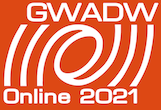Speaker
Description
Gravitational waves excite quadrupolar vibrations of elastic bodies. Monitoring these vibrations was one of the first concepts proposed for the detection of gravitational waves by Joseph Weber. At laboratory scale, these experiments became known as resonant-bar detectors, which form an important part of the history of GW detection. Due to the dimensions of these bars, the targeted signal frequencies were in the kHz range. It was also Weber who suggested to monitor vibrations of Earth and Moon to search for gravitational waves in the mHz band. His Lunar Surface Gravimeter was deployed on the Moon in 1972 by the Apollo 17 crew. A design error made it impossible to carry out the intended search for GWs, but the idea remains intriguing. We have proposed a new concept, the Lunar Gravitational-Wave Antenna (LGWA), based on Weber’s idea. The key component is a next-generation, high-sensitivity seismometer to be deployed on the Moon. LGWA would have a rich GW and multi-messenger science case with galactic binaries and massive black-hole binaries. It would also serve as a high-precision geophysical station shedding light on the interior structure of the Moon, the mechanisms of moonquakes, and the Moon's formation history.

